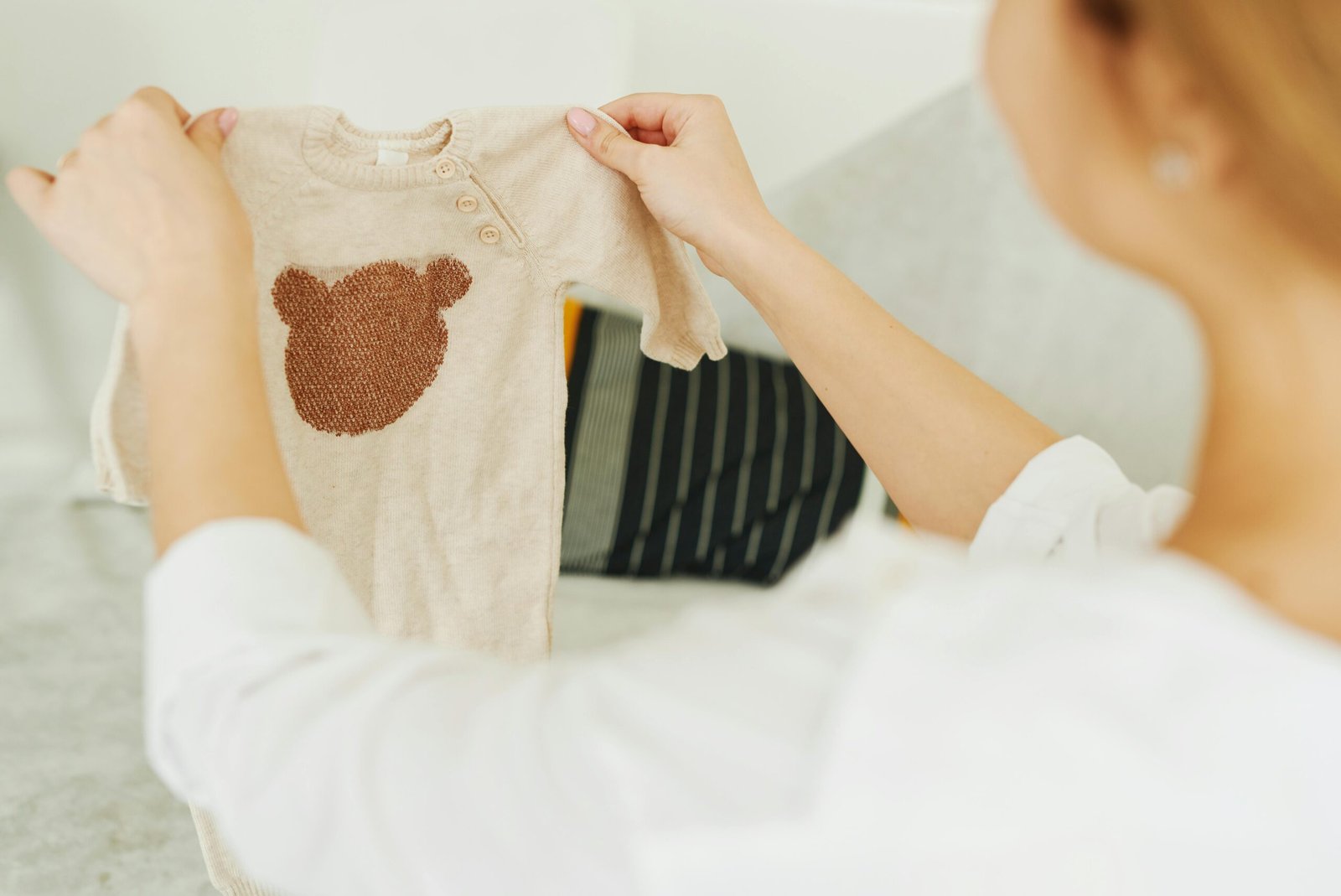Discover the essentials of “What size is 80 in baby clothes?” with our comprehensive guide. Learn how to accurately measure your baby for the perfect fit, understand age and growth variations, and navigate brand differences.
Introduction to Baby Clothing Sizes
When exploring the world of infant fashion, a common question that pops up among parents is, “What size is 80 in baby clothes?” This query underscores the quest for understanding the sizing chart that corresponds to our little ones’ needs, ensuring they are clothed comfortably and appropriately as they grow.
To unpack the question “What size is 80 in baby clothes?” it’s essential to recognize that baby clothing sizes are primarily influenced by three critical factors: the baby’s age, length, and weight. However, it’s crucial to note that not every baby will fit into a specific size category perfectly based on their age. This variability is precisely where the numerical sizing system, including size 80, becomes invaluable.
The numerical size, particularly size 80 in baby clothes, is a standard measurement that typically aligns with the baby’s length in centimeters. To put it simply, when we refer to size 80 in baby clothes, we are generally talking about clothes designed to fit babies who measure approximately 80 centimeters in length. This sizing is often best suited for babies around 9 to 12 months old. However, this is a broad estimate, as the rate of growth can vary significantly from one baby to another.
Understanding “What size is 80 in baby clothes?” is more than just figuring out a number. It’s about ensuring that the clothes you choose for your baby don’t hinder their movement and are comfortable enough for all the crawling, sleeping, and playing they do. Properly sized clothes are crucial for preventing discomfort and potential safety risks associated with overly tight or excessively loose garments.
Moreover, the question “What size is 80 in baby clothes?” highlights the importance of recognizing the lack of uniformity in sizing across different brands. Each clothing brand may have its unique sizing chart, making it imperative for parents to check these charts before making a purchase. Knowing the specifics of size 80 in the brand of your choice can help you make more informed decisions, ensuring a better fit for your baby.
So, when addressing the question, “What size is 80 in baby clothes?” remember it’s not just about age. It’s about considering your baby’s unique body measurements and growth pattern. Frequent checks and adjustments may be necessary as your baby grows to ensure continuous comfort and safety in their attire.
What Size Is 80 In Baby Clothes?
Navigating the world of baby clothing can be both a joy and a bit confusing, especially when it comes to figuring out the different sizes that brands and countries use. If you’ve ever looked at a tag saying “size 80” and wondered what it means, you’re definitely not by yourself. Understanding “What size is 80 in baby clothes?” is a common question among parents and caregivers trying to find the right fit for their little ones.
To start, “What size is 80 in baby clothes?” refers to a specific size that is commonly used in many countries, especially in Europe and Asia. This size is designed for babies who are roughly between 9 to 12 months old. However, it’s important to remember that this age range is just a general guideline. Babies grow at their own unique pace, so a size 80 might fit some babies sooner or later than this age range.
When we dive deeper into the question of “What size is 80 in baby clothes?” it’s crucial to understand that this size is part of a numerical system used to categorize baby clothing based on the baby’s length in centimeters. In this case, size 80 is meant for babies who are approximately 80 centimeters tall. This system helps parents select clothes that are a better fit for their baby’s current size, rather than relying solely on age, which can be quite inaccurate due to the varying rates of growth among babies.
However, the journey to answer “What size is 80 in baby clothes?” doesn’t stop there. Considering the differences in sizing standards across brands and countries, it’s essential for parents to check the sizing charts provided by clothing manufacturers. This ensures that when they choose size 80 for their baby, they’re getting a garment that truly fits well, considering the brand’s specific dimensions for that size.
In essence, understanding “What size is 80 in baby clothes?” involves recognizing that this size is tailored for babies around the 9 to 12-month mark, corresponds to a length of about 80 centimeters, and requires a bit of research to match the size with the right fit from brand to brand. This knowledge empowers parents to make informed decisions when shopping for their growing baby, ensuring comfort, mobility, and happiness for their little one.
Deciphering Size 80 in Baby Clothes
Understanding “What size is 80 in baby clothes?” is crucial for any parent navigating the vast and colorful world of infant fashion. Size 80, in the realm of baby clothing, typically caters to babies who are around 9-12 months old. This age range, however, serves more as a flexible guideline than a hard and fast rule. The reason behind this flexibility is that babies grow at their own unique pace, and what fits one baby at 9 months may not fit another until they’re 12 months or older. The fit of size 80 baby clothes can also vary significantly from one brand to another, as each brand may use slightly different measurements for their sizing charts.
The Significance of Proper Fit
When we delve into the question, “What size is 80 in baby clothes?” it’s not just about pinpointing a number on a tag. It’s about understanding how this size fits into the broader spectrum of baby clothing sizes and ensuring that the clothes you choose for your baby will provide them with the utmost comfort and safety. Clothes that are too snug can hinder a baby’s ability to move freely, potentially leading to discomfort or skin irritation due to the tight fabric rubbing against their delicate skin. On the other hand, garments that are too loose pose their own set of risks, including the chance of your baby tripping over excess fabric or getting their limbs caught, which could lead to accidents.
The Role of Correct Sizing in Baby Clothes
The importance of selecting the correct size for baby clothes cannot be overstated. “What size is 80 in baby clothes?” becomes a key question in ensuring that your baby is dressed not only stylishly but also in attire that promotes their well-being and safety. As babies explore their environment, learning to crawl, stand, and eventually walk, having clothes that support these activities without causing restrictions is essential. This makes understanding “What size is 80 in baby clothes?” a critical aspect of parenting young children.
Navigating Brand Variations in Size 80
Moreover, “What size is 80 in baby clothes?” is a question that reminds parents and caregivers to pay close attention to the sizing information provided by clothing manufacturers. Since there is no universal standard for baby clothing sizes, the dimensions for size 80 can differ from one brand to another. It’s advisable to consult the brand’s specific sizing chart before making a purchase. This ensures that when you select size 80 for your baby, you’re making an informed choice that takes into account your baby’s current growth phase and the particular sizing tendencies of the brand you’re buying from.
Understanding Baby Clothing Sizes by Age
When it comes to “What size is 80 in baby clothes?”, it’s essential to start with the basics of how baby clothing sizes work. Most brands categorize their clothing sizes by age, ranging from newborn to toddlers. This age-based system is quite convenient for quick shopping decisions; however, it often involves some guesswork for parents. This is particularly true for those whose babies may be smaller or larger than the average size typical for their age. As a result, while looking for “What size is 80 in baby clothes?”, parents might find themselves pondering if the age-based size truly fits their child’s unique body shape and size.
Sizing Based on Length and Weight
In addition to age, some brands take a more detailed approach by offering sizing guides that factor in the baby’s length and weight. This method provides a clearer answer to “What size is 80 in baby clothes?” by helping parents select clothes that are more likely to fit their baby comfortably, especially for those little ones who do not fit neatly into the standard age-based sizes. By considering both the length and weight of the baby, parents can avoid the common pitfalls of clothes that are too tight or too loose, ensuring a better fit that accommodates the baby’s current stage of growth and development.
“What Size Is 80 in Baby Clothes?” in International Context
The question of “What size is 80 in baby clothes?” gains additional complexity when considering international sizing standards. Size 80 is a common designation used in Europe and some Asian countries, directly correlating to the baby’s height in centimeters. However, in the United States, the closest equivalent to size 80 is typically labeled as 12 months, although variations exist between different brands. This discrepancy underscores the importance of understanding “What size is 80 in baby clothes?” within the context of global sizing charts. Parents shopping for baby clothes from international brands or while traveling abroad will find it useful to compare these sizes to ensure they are selecting apparel that best fits their baby.
Navigating “What Size Is 80 in Baby Clothes?” Across Different Sizing Systems
In summary, when unraveling “What size is 80 in baby clothes? it’s crucial for parents to navigate through the various sizing systems employed by different brands and countries. By understanding the nuances of sizing by age, and considering more precise measurements like length and weight, parents can make more informed decisions. Additionally, being aware of how size 80 translates across international sizing charts further aids in selecting the perfect fit for their baby, ensuring comfort, safety, and room for growth. This comprehensive approach to understanding “What size is 80 in baby clothes? simplifies what can initially seem like a daunting task, making the journey of dressing your baby a little easier and a lot more enjoyable.
Specifics of Size 80
Age Group Targeted by Size 80 in Baby Clothes
When we delve into the specifics of “What size is 80 in baby clothes?”, we find that this size is generally aimed at babies who are about 9-12 months old. This age range, however, is not set in stone. The reason behind this variability is the unique growth rate of each baby. Some babies might fit into size 80 sooner or later than the typical 9-12 month range, depending on their individual growth spurts and developmental milestones. Therefore, while “What size is 80 in baby clothes?” offers a starting point, parents should consider their baby’s personal growth trajectory when selecting clothes.
Dimensions That Define Size 80 in Baby Clothes
Understanding “What size is 80 in baby clothes?” also involves getting to grips with the specific dimensions that this size encompasses. Clothes labeled as size 80 are designed with particular measurements in mind, ideally fitting babies who weigh between 9 to 11 kilograms (20-24 pounds) and whose length falls within the 71-76 centimeters (28-30 inches) range. These dimensions serve as a guideline for parents to assess whether “What size is 80 in baby clothes?” is the appropriate choice for their baby, considering their weight and length, which are often more reliable indicators of fit than age alone.
Brand Variations Impacting Size 80 in Baby Clothes
A critical aspect of understanding “What size is 80 in baby clothes?” is recognizing that there can be significant variations in how size 80 is defined across different brands. Each brand may have its interpretation of “What size is 80 in baby clothes?”, leading to slight differences in the dimensions and fit of garments labeled as size 80. This variance underscores the importance of checking the specific sizing guide provided by each manufacturer before making a purchase. By doing so, parents can ensure that when they choose “What size is 80 in baby clothes?”, they are selecting an item that truly fits their baby’s current size and shape, mitigating the risk of buying clothes that are too snug or too loose.
Conclusion: Navigating the Specifics of Size 80 in Baby Clothes
In conclusion, when parents seek to understand “What size is 80 in baby clothes?”, they are engaging with a multifaceted question that touches on age suitability, precise dimensions, and the variability between brands. By considering these factors in tandem, parents can make informed decisions, selecting clothes that not only fit well but also accommodate their baby’s comfort and growth. Remember, “What size is 80 in baby clothes?” is more than just a number; it’s a guideline to help ensure that babies are dressed comfortably, safely, and stylishly as they grow and explore the world around them.
Tips for Choosing the Right Size
Consider Your Baby’s Growth Rate
Babies grow at an astonishing rate. When purchasing size 80 clothes, consider how quickly your baby is growing and whether they might outgrow the size soon.
Understand the Brand’s Sizing Chart
Before buying, familiarize yourself with the brand’s sizing chart. This can help you make a more informed decision and avoid the hassle of returns.
Seasonal Clothing Considerations
Keep the season in mind when shopping for size 80 clothes. You might want to opt for slightly larger sizes for winter clothing to accommodate layers.
Conclusion
Size 80 in baby clothes is a versatile and commonly used size that caters to babies around 9-12 months old. However, the most important takeaway is to consider your baby’s unique size and growth rate. With a little bit of knowledge and a lot of love, you’ll find the perfect fit for your little one.
FAQs
1. Can size 80 fit a 1-year-old?
Yes, size 80 can fit a 1-year-old, as it is generally designed for babies aged 9-12 months. However, because growth rates can vary widely among babies, size 80 might be a perfect fit for some 1-year-olds, while others may need a slightly larger or smaller size. It’s essential to consider your child’s specific measurements and growth pattern when selecting clothes.
2. How do I know if size 80 is too big for my baby?
You can tell if size 80 is too big for your baby if the clothes look significantly loose, especially around the shoulders, chest, and waist. Additionally, if the sleeves or pant legs are too long and require rolling up to prevent tripping or covering the hands and feet, the size is likely too large. Checking the fit against your baby’s current height and weight compared to the size chart can also guide you.
3. Is there a difference between size 80 for boys and girls?
In most cases, there is no significant difference between size 80 for boys and girls, especially in infancy and early toddler years. Baby clothing is often designed to be unisex in terms of fit, particularly for basics like onesies, shirts, and pants. However, some brands might offer slightly varied designs or fits in gender-specific clothing lines, so it’s always good to check the brand’s specific size guide.
4. How often should I reassess my baby’s clothing size?
It’s a good practice to reassess your baby’s clothing size every 2-3 months, especially during their first year of life when growth is most rapid. Keeping track of your baby’s height and weight development can help you anticipate when it’s time to size up. Additionally, observing how their current clothes fit can indicate when it’s time to make a change.
5. Can size 80 clothes shrink after washing?
Yes, size 80 clothes can shrink after washing, particularly if they are made from natural fibers like cotton and if washed in hot water or dried at high temperatures. To minimize shrinkage, follow the care instructions on the clothing label, which often recommend washing in cold water and tumble drying on low or hanging to dry. Pre-washed or pre-shrunk fabrics tend to have less shrinkage, so looking for these options when purchasing can also be beneficial.
Read Article: What Colours Go With Grey Clothes?
















